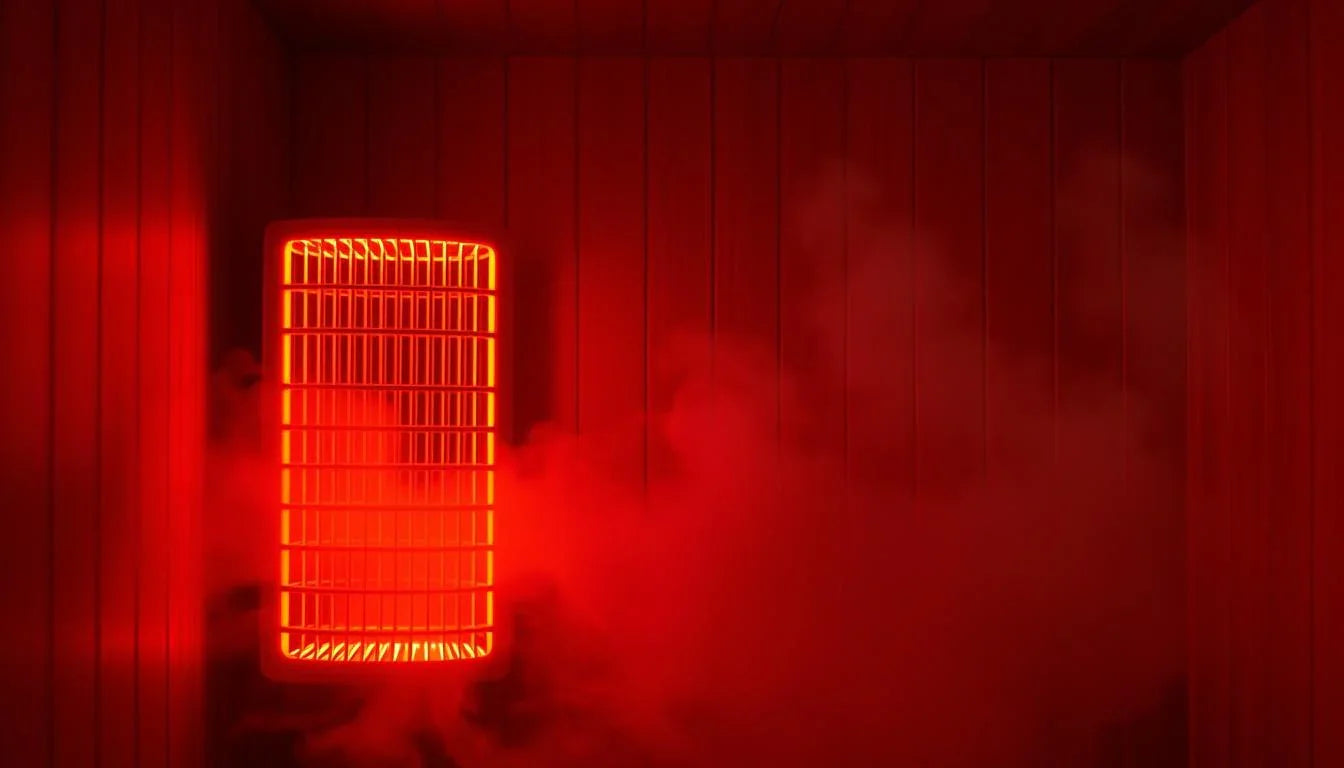
The Science Behind Infrared Sauna Heat Benefits
The Science Behind Infrared Sauna Heat Benefits
Understanding how radiant systems warm the body helps readers weigh comfort, safety, and expected results. Modern units operate at moderate temperature ranges—commonly 120°F–150°F, with a 160°F maximum—while room conditions near 68°F–72°F support stable core regulation.
The core idea is simple: these systems warm tissues directly rather than just the air. That direct delivery can produce a deep warming effect and sweating-driven benefits at lower ambient measures. This often makes longer, more comfortable sessions possible for many users.

Evidence-based benefits cover improved circulation, stress relief and relaxation, support for cardiovascular wellness, skin appearance, and post-activity recovery. Beginners usually start with short sessions—10–15 minutes—and prioritize hydration before and after.
This guide will compare these systems and traditional options objectively, outline safe session timing, and offer practical home-use tips on space, electrical needs, and ventilation. The approach is balanced and science-informed so you can make an informed choice.
Key Takeaways
- Direct radiant warming reaches tissues at lower air temperatures.
- Typical operating range: 120°F–150°F (max 160°F); room ~68°F–72°F aids regulation.
- Primary benefits: circulation support, relaxation, detox-like sweating, and recovery.
- Start short (10–15 minutes), hydrate, and adjust intensity to tolerance.
- Home units are increasingly accessible; consider space and ventilation.
What Is Infrared Sauna Heat and How It Works
Radiant panels deliver energy that the body absorbs directly, creating a different warming pattern than traditional models. This distinction explains why users often notice a deep sweat at lower ambient settings.
Heaters that warm the body versus the air
Infrared panels emit radiant energy that penetrates shallow tissues, so the body warms before the cabin air does. By contrast, traditional saunas rely on hot air and convection to transfer energy to skin.
Radiant delivery, tissue penetration, and perceived temperature
Radiant wavelengths reach superficial tissues and elevate local temperature and heart rate. That response triggers sweating without needing extreme ambient numbers.
Why lower room temperatures still produce a deep sweat
- Radiant delivery warms tissues directly, so body core and skin rise faster.
- Different heaters (panels vs. rocks or stoves) change how quickly warmth builds and how even it feels.
- Keep cabin gradients modest—aim for under ~20°F variation—to ensure a predictable session experience.
Position near panels for even exposure, avoid pressing skin to emitters, and start short sessions while you assess tolerance and comfort.
Optimal Infrared Sauna Temperatures and Safety Ranges
Choosing a safe, effective temperature window helps balance comfort and results. Aim for a cabin temperature between 120°F and 150°F. Do not exceed 160°F; higher settings raise the risk of dehydration and heat illness.
https://www.youtube.com/watch?v=ossargbKbv0
Session length should match the goal. Short, moderate sessions suit relaxation. Longer, slightly warmer sessions (still within the 120–150°F range) can increase sweating for recovery or circulation work.
Beginners should start with 10–15 minutes and add time gradually as tolerance grows. People who return regularly can extend sessions, but monitor signs of overexposure like dizziness, nausea, or a rapid pulse.
Room, hot spots, and practical steps
Keep the ambient room at about 68°F–72°F so the body can cool between uses. Inside the cabin, limit perceived differences to roughly 20°F by changing position if a seat feels much warmer.
- Preheat briefly, then enter.
- Use a timer and a thermometer to track time and temperature.
- Drink water before and after; consider electrolytes for longer sessions.
| Goal | Typical Temperature | Session Guidance |
|---|---|---|
| Relaxation | 120°F–135°F | 10–20 minutes; comfortable pace |
| Circulation / recovery | 130°F–145°F | 15–25 minutes; monitor tolerance |
| Deeper sweating | 140°F–150°F | 15–30 minutes; hydrate and watch skin response |
| Safety cap | Do not exceed 160°F | Exit at signs of overexposure; cool with water |
Evidence-Based Health Benefits of Infrared Saunas
Research and real-world experience both point to consistent improvements in circulation, recovery, and well-being when sessions follow safe temperature and timing guidance.
Circulation and cardiovascular support
Gentle, sustained radiant warmth raises heart rate modestly, much like light exercise. This can support vessel dilation and improved blood flow without intense strain.
Stress reduction, relaxation, and sleep quality
Warm sessions trigger a parasympathetic response that eases muscle tension and promotes relaxation. Many users report better sleep when they use a session earlier in the evening.
Sweating, detoxification, and skin appearance
Increased sweating at tolerable temperature assists fluid turnover and skin surface cleansing. Pat skin dry and shower afterward, and rehydrate with water to replace lost fluids.
Muscle recovery, pain relief, and perceived weight loss
Warmth can reduce perceived soreness and improve range of motion after exercise. Short-term water weight loss may occur, but lasting body composition change needs diet and activity.
"Consistent, moderate sessions can improve circulation and comfort while keeping risk low."
- Comparison: Many of these benefits also appear with traditional saunas, though the lower cabin temperature in these units often makes sessions feel more approachable.
- Safety: Stay within 120°F–150°F, monitor symptoms, and sip water before and after.
| Benefit area | What to expect | Practical tip |
|---|---|---|
| Circulation | Modest heart rate increase, vasodilation | 15–25 min; monitor breathing |
| Relaxation & sleep | Parasympathetic activation, less tension | Use in evening; keep sessions gentle |
| Recovery & pain | Reduced soreness, improved mobility | Combine with stretching and hydration |
Comparing Infrared Saunas and Traditional Saunas
Choosing between these options often comes down to whether someone prefers enveloping steam or direct, targeted warmth. Both types offer relaxation, circulation support, sweating, and similar health benefits, but they feel very different.

Heat profile and sensation
Infrared saunas deliver gentle radiant energy that warms the body directly at lower cabin numbers (about 120°F–150°F). By contrast, traditional saunas run higher (150°F–195°F) and heat the air and stones for a more intense effect.
Humidity and comfort
Traditional setups often include 10%–20% humidity and welcome steam bursts for a classic bath feeling. Infrared types stay drier (roughly 5%–10%), which many users find more breathable and easier to tolerate.
Choice by goals and practical matters
Pick based on experience and goals: those wanting a ritualistic, high heat and steam session may favor a traditional sauna. Users who want longer, milder sessions or simpler installation often choose an infrared sauna.
| Feature | Traditional saunas | Infrared saunas |
|---|---|---|
| Typical temp | 150°F–195°F | 120°F–150°F |
| Humidity | 10%–20% with steam | 5%–10% drier air |
| Maintenance | Stoves/rocks need care, venting | Panels require less upkeep |
Safety, Hydration, and Comfort During Sauna Use
Prioritizing hydration and clear exit cues helps people enjoy sessions without undue risk. Small habits protect comfort and safety so the claimed benefits remain accessible.
Hydration strategy before, during, and after sessions
Drink water before you enter. Aim for a full glass 15–30 minutes prior.
For longer sessions, sip water during the session to prevent dehydration. Afterward, rehydrate with plain water or use electrolytes if you sweated heavily.
Recognizing overheating signs and when to exit
Start short—10–15 minutes for beginners—and increase time slowly as tolerance improves.
- If you feel dizzy, nauseated, lightheaded, or get a headache, end the session immediately.
- Move to a normal-temperature room, sit or lie down, and drink water until symptoms resolve.
- Avoid alcohol before or after use; it raises dehydration risk and can mask warning signs.
Even at moderate cabin numbers the body warms significantly. Respect daily variability and scale back when you feel off.
| Action | Simple guidance | Why it matters |
|---|---|---|
| Pre-session | Drink one glass of water | Supports circulation and cooling |
| During longer time | Sip water as needed | Prevents cramping and dizziness |
| Post-session | Cool shower (not ice-cold) and rehydrate | Normalizes temperature safely |
"Consistent hydration and conservative timing keep sessions safe and comfortable for most people."
Light clothing or a towel allows evaporative cooling between intervals. Log time, temperature, and how your body feels to fine-tune future sessions.
What to Expect in an Infrared Sauna Session
A typical session begins with a short warm-up so the cabin and heaters reach a steady, predictable setting. Allow a brief preheat until the unit nears your target; entering earlier works if you prefer a gentle ramp-up.

Preheating, timing, and acclimating for beginners
Start conservative: beginners should aim for 10–15 minutes and add several minutes across future sessions as tolerance builds. Target cabin ranges are commonly between 120°F–150°F for a comfortable experience.
Sweating patterns, heart rate changes, and recovery
Within minutes many users notice a steady rise in heart rate and the first beads of sweat on the forehead and torso. Sweating typically progresses to broader perspiration across the body; keep a towel handy to manage sweat.
Listen to your body: if dizziness or nausea appears, exit and cool down. After a session, sit in a cooler room for a few minutes, drink water, and take a lukewarm shower to rinse sweat and normalize skin temperature.
Post-session cooldown, shower, and cleaning routine
Simple cleaning keeps the cabin hygienic and functioning well. Wipe benches and contact surfaces after use, air out the unit briefly, and keep floors dry.
Gentle stretching after cooling can enhance relaxation and aid recovery. Track session time, temperature, and how you feel to refine settings for an enjoyable, sustainable routine. Avoid heavy meals right before a session; a light snack and proper water intake support comfort and safety.
Infrared Saunas at Home: Space, Setup, and Use
Home placement decisions shape safety, comfort, and long-term use. Choose a level, dry room with standard ceiling height and a stable ambient room temperature near 68°F–72°F to support reliable sessions.
Indoor placement, ventilation, and electrical access
Select a spot with a dedicated outlet nearby. Many models are plug-and-play, but confirm amperage and circuit needs to avoid tripped breakers.
Ensure basic airflow: even drier systems need fresh air to prevent stale accumulation and to improve comfort during use.
Sizing, panel layout, and seating
Size the cabin for the number of regular users. Avoid crowding so panels or heaters distribute warmth evenly and every person has similar exposure.
Plan for bench depth and circulation space so movement and cleaning are simple.
Outdoor placement and moisture management
For an outdoor sauna, choose weatherproof materials, a raised platform, and proper roofing. Use GFCI-protected electrical and route wiring per local code.
Keep a towel under feet and along benches and wipe surfaces after each session to manage water and prolong wood life.
| Consideration | Simple guidance | Why it matters |
|---|---|---|
| Room location | Level, dry, 68°F–72°F | Stable ambient room supports consistent sessions |
| Ventilation | Low-flow fresh air exchange | Prevents stale air and increases comfort |
| Electrical | Check plug type and amperage | Avoid nuisance trips; ensure safe operation |
- Plan accessories: towel hooks, a water bottle holder, and a small shelf for convenience.
- Think ahead: allow room to add a second seat or audio lighting for an upgraded experience.
infrared sauna heat
The modern radiant cabin offers a distinct, approachable session compared with traditional high‑air systems. Panels warm the body directly within a lower ambient range (commonly 120°F–150°F), which many users find more comfortable for extended use.
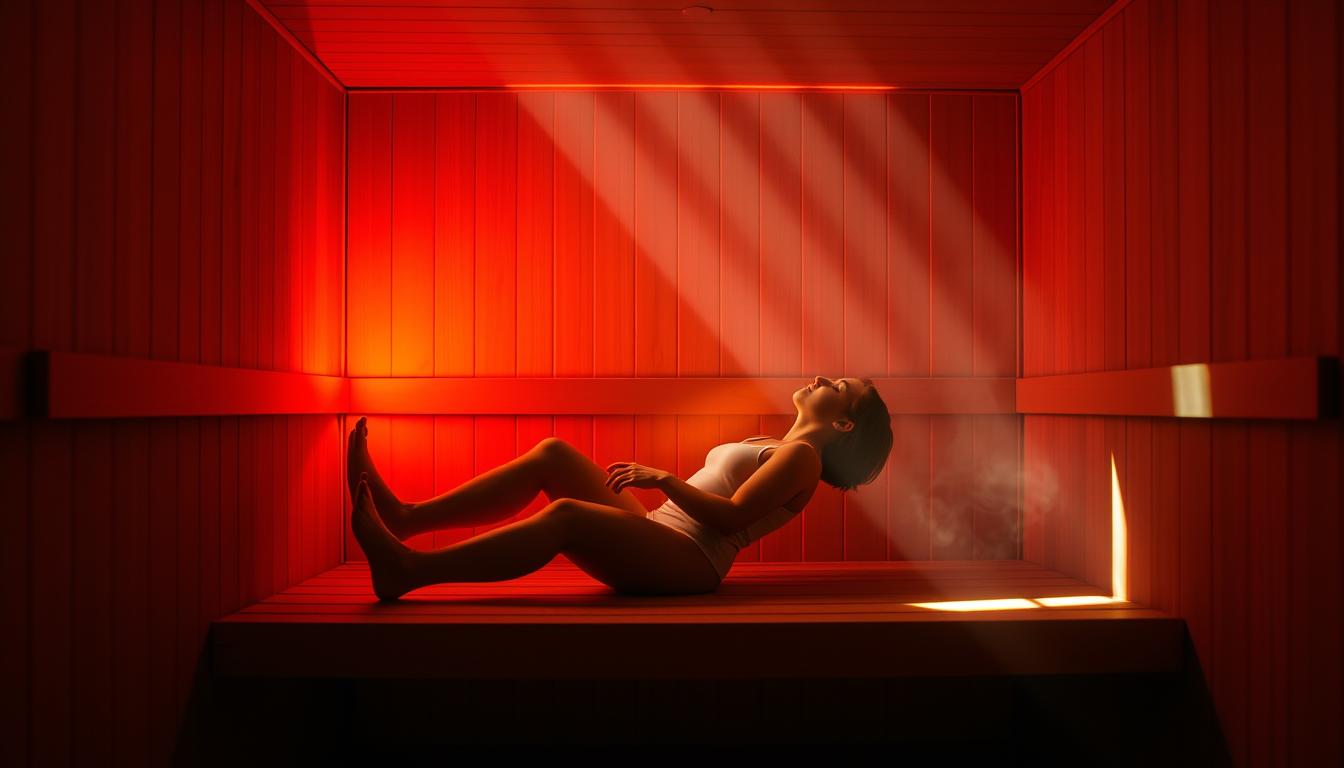
Main features that define the sauna infrared experience
Radiant panels create a gentle envelope of warmth around the body, leading to a steady, penetrating sensation rather than a sudden blast of hot air.
Quick warm-up and even panel placement help maintain consistent exposure. Controls let users target temperatures and session length with ease.
How infrared traditional comparisons influence buyer choice
Traditional units run hotter and often include steam. That gives a classic ritual and an intense, humid ambiance some people prefer.
Buyers sensitive to very hot air or who want longer, drier sessions often choose radiant cabins. Others who value high heat and steam select traditional setups.
"Test a session when possible—personal comfort, not specs alone, should guide your choice."
| Feature | Radiant cabins | Traditional units |
|---|---|---|
| Typical temp | 120°F–150°F | 150°F–195°F |
| Humidity | Lower, drier air | Higher with steam option |
| User feel | Steady, penetrating warmth around the body | Enveloping hot air and steam |
| Session length | Often longer at modest temps | Shorter, more intense sessions |
- Heaters and panel design: even layout improves consistency and comfort.
- Benefits prioritized: relaxation, looser muscles, and a satisfying sweat often drive decisions more than technical specs.
- Choice tip: try both styles to see which matches breathing comfort and recovery goals best.
Heaters and Heating Elements: Choosing the Right Technology
Selecting the right heating technology shapes comfort, installation needs, and operating cost. This choice also determines session feel and maintenance demands.
Emitters and panels versus rocks and stoves
Radiant panels and emitters warm the body directly, while electric rock units and wood stoves heat stones and the cabin air. One type targets tissues; the other creates a classic, enveloping atmosphere.
Energy use, operating costs, and high heat expectations
Panel systems often reach comfort at lower ambient temperature, which can lower energy use and monthly costs. Traditional units run hotter (150°F–195°F) and deliver the intense, steamy sessions some users prefer.
Controls, installation, and upkeep
Modern emitters pair with precise thermostats for steady output. Rock and stove setups need periodic stone checks and stove servicing.
Installation varies: many panel units are plug‑and‑play. Traditional heaters usually need dedicated wiring and, for wood stoves, venting and clearances.
| Feature | Panel / emitter | Rock / stove |
|---|---|---|
| Typical temperature | 120°F–150°F | 150°F–195°F |
| Energy & cost | Often more efficient for daily use | Higher draw during intense sessions |
| Installation & maintenance | Standard outlet, surface cleaning | Dedicated circuit, stone care, venting |
Match the type to your goals: choose traditional saunas for ritual and high‑air intensity, or select panel systems for convenient, regular therapy at home.
Installation and Maintenance: From DIY to Long-Term Care
Installation decisions shape how quickly a unit is ready and how much ongoing care it will need. At home, many models arrive as near‑complete kits that assemble fast and plug into a standard outlet. This plug‑and‑play path reduces installation time and electrician costs.

Installation paths and space planning
Some types require a dedicated circuit, venting, or a stove flue. A traditional sauna or wood heater often needs an electrician and proper vent work for safety.
Plan space early: allow clearances around heaters, stable flooring, and adequate doorway widths for benches and panels. Keep the ambient room near 68°F–72°F for comfort and component longevity.
Cleaning, surface care, and heater checks
Routine care keeps a cabin hygienic and long‑lasting. Wipe benches after each use. Dry any standing water and clean backrests and flooring periodically.
Inspect the heater and electrical connections on a scheduled basis. For infrared saunas check panel performance; for traditional units examine rocks, elements, and controls.
- Wipe surfaces after sessions and air the unit.
- Record cleaning dates, heater notes, and any service work in a simple log.
- Perform annual safety checks: fasteners, door latches, heat shields, and GFCI circuits for outdoor sauna installations.
| Area | Recommendation | Why it matters |
|---|---|---|
| Installation | Plug‑and‑play or pro wiring | Safety and reliable use |
| Maintenance | Wipe, dry, inspect regularly | Extends lifespan and health of components |
| Outdoor | Weatherproof materials, GFCI | Durability and electrical safety |
"A short care routine and yearly inspections prevent small issues from becoming costly repairs."
Optimizing Your Sauna Experience
Personalizing sessions enhances relaxation and the overall therapy effect. Add gentle lighting and calming music to shape mood without distraction.
Light aromatherapy with a few drops of lavender or eucalyptus on a towel can deepen relaxation. Keep scents subtle to avoid irritation.
Frequency, duration, and session planning
Start with 2–3 sessions per week and adjust based on recovery and schedule. Some users prefer shorter daily sessions for consistent benefit.
Keep session time moderate and increase gradually. Hydrate before and after each session and monitor how your body feels.
Enhancements and accessory choices
Layering red light therapy during or after a session may complement perceived recovery and relaxation.
Useful accessories include backrests, clean towels, a water bottle holder, and a small fan near the door for airflow nudges.
"Consistent, comfortable routines typically yield more reliable relaxation and recovery outcomes than sporadic, very hot sessions."
| Goal | Frequency | Practical tip |
|---|---|---|
| Relaxation | 2–4× weekly | Short session, calming music, light aromatherapy |
| Recovery | 3–5× weekly | Longer session, red light integration, hydrate well |
| Maintenance | 1–3× weekly | Track sessions, adjust time and accessories |
Skin and sweating care: rinse and moisturize after use, keep towels clean, and consider electrolytes if sweating heavily. Log session time, temperatures, and how the body responds to refine your choice and maximize benefits.
Conclusion
A smart choice balances personal comfort, desired benefits, and practical home needs.
In short, infrared saunas often deliver radiant comfort at moderate temperature ranges, while traditional saunas offer hotter air and the option for steam. Both support relaxation, circulation, sweating, and recovery when used safely and regularly.
Match the sauna experience to your goals, available space, and electrical setup at home. Start conservatively: build session time slowly, stay hydrated, and watch for warning signs.
When possible, try both styles to confirm what you prefer. Keep a simple log of time, temp, and how you felt to refine settings and sustain long-term health benefits.
Final note: steady, comfortable sessions deliver more reliable results than chasing extreme heat or duration—prioritize safety and consistency in your choice.
FAQ
What is the science behind infrared sauna heat benefits?
The therapy uses radiant energy that warms tissues directly rather than relying solely on hot air. This produces a deep, often more comfortable rise in core and skin temperature, which can increase circulation, support muscle recovery, and promote sweating at lower room temperatures than traditional steam rooms.
How does this system work compared with traditional heaters?
Specialized emitters produce infrared wavelengths that penetrate skin and subcutaneous tissue, delivering direct warmth. Traditional systems raise air temperature and use steam to transfer warmth indirectly. The result is a different thermal profile and perceived comfort during a session.
Why can people sweat deeply at lower room temperatures?
Because radiant energy heats the body itself, cells and blood warm more efficiently. The body responds by activating sweat glands even when ambient air is cooler, so users often achieve substantial perspiration without extreme room temperatures.
What are recommended temperature ranges and safety limits?
Typical operating ranges fall between 120°F and 150°F, with many systems capped near 160°F. Users should follow manufacturer guidance, start at lower settings, and avoid prolonged exposure at maximum temperatures until acclimated.
How long should sessions last and how should users adjust intensity?
Sessions commonly last 20–40 minutes. Beginners should start with 10–15 minutes and gradually increase. Adjust duration and temperature based on tolerance, hydration status, and the session goal—relaxation, recovery, or circulation support.
Is ambient room temperature important?
Yes. Maintaining a moderate room temperature (around 68°F–72°F) keeps the cabin comfortable and reduces overly warm air pockets. Users should watch for localized hot spots near panels and reposition if needed.
What evidence supports health benefits like circulation and stress reduction?
Clinical and observational studies indicate improved peripheral blood flow, transient reductions in blood pressure, and markers of relaxation after sessions. Many users report better sleep and reduced tension, though outcomes vary by individual and protocol.
Can sessions aid detoxification and improve skin appearance?
Induced perspiration can help eliminate some water-soluble compounds and contribute to clearer skin through increased circulation and pore cleansing. However, detox claims should be weighed against scientific evidence and hydration practices.
Do sessions help with muscle recovery and pain relief?
Localized warming increases tissue perfusion and can reduce stiffness and muscle soreness. Many athletes incorporate short sessions post-exercise to support recovery and perceived pain relief.
How do radiant systems compare to high-heat and steam-based experiences?
Radiant systems offer gentler, direct warmth and lower humidity, which feels milder for longer sessions. High-heat, steam-based rooms deliver intense air temperature and moist heat that some users prefer for rapid sweating and traditional rituals.
How should users hydrate before, during, and after a session?
Drink water before entering and sip during if possible. Rehydrate after with electrolyte-balanced fluids if sessions are long or vigorous. Avoid alcohol and heavy meals immediately before use.
What signs indicate overheating and when should someone exit?
Dizziness, nausea, excessive weakness, headache, or palpitations signal overexposure. Exit immediately, cool down, and rehydrate. Seek medical help if symptoms persist or worsen.
What should beginners expect in their first sessions?
New users should preheat briefly, start with short sessions, and sit near lower-output panels until acclimated. Expect gradual sweating, modest heart rate increases, and a sense of warmth that intensifies over time.
How do sweating patterns and heart rate change during use?
Sweating often begins within 10–20 minutes and may persist after the session. Heart rate typically rises modestly, similar to light exercise, supporting increased circulation and metabolic activity.
What is the recommended post-session routine?
Cool down for 5–10 minutes, shower to remove sweat, and wipe surfaces dry. Regular cleaning of interior surfaces and panel checks keep the system hygienic and functional.
What should homeowners consider for placement and electrical needs?
Indoor placement needs adequate ventilation and level flooring. Confirm electrical access and circuit requirements with the manufacturer; some models are plug-and-play while others need dedicated wiring.
How do you size a unit for people and available space, and what about outdoor use?
Choose a size that fits intended users—single, two-person, or larger models—with enough interior room to sit comfortably. Outdoor setups require weatherproofing, a level base, and protection from moisture and extreme temperatures.
What features define the user experience?
Key features include panel type and placement, control precision, insulation quality, seating comfort, and accessory options like lighting, audio, and chromotherapy that personalize sessions.
How do traditional comparisons influence buyer choice?
Buyers weigh desired intensity, humidity preference, installation complexity, and operating costs. Those who prefer gentler, longer sessions often select radiant systems; enthusiasts of high heat and steam may opt for traditional units.
What types of emitters and heating elements are available?
Options include carbon and ceramic panels, each with different warmth dispersion. Traditional alternatives use electric rock heaters or wood stoves that warm air and create steam when water is applied.
How do energy efficiency and operating costs compare?
Panel-based units generally run more efficiently and reach target temperatures faster, reducing operating time. Traditional rooms with high air temperatures and steam often consume more energy per session.
What are installation differences between plug-and-play systems and traditional setups?
Many modern panels install easily with standard outlets and minimal venting. Traditional units often require dedicated circuits, ventilation planning, and, for wood stoves, chimney or exhaust routing.
How should owners maintain and clean their units to extend lifespan?
Wipe surfaces after use, vacuum or dust panels and floor areas regularly, inspect wiring and panel mounts periodically, and follow manufacturer service intervals for longevity.
How can users personalize sessions with aromatherapy or lighting?
Low-volatility essential oils can be used on an external cloth (not on heaters) and LED lighting or soft music enhances relaxation. Always follow safety guidance and avoid applying liquids to heating elements.
What frequency and session lengths suit different goals?
For relaxation and sleep support, 2–3 short sessions per week may suffice. Athletic recovery may benefit from more frequent, shorter exposures. Tailor frequency to tolerance, hydration, and medical advice.
Can red light therapy be integrated with a session?
Yes—many users add targeted phototherapy panels for skin and tissue benefits. Ensure devices are compatible and positioned according to manufacturer instructions for safe use.
What routine checks help ensure safety over time?
Test controls and timers regularly, verify that panels heat evenly, inspect seals and doors for integrity, and replace worn components per recommended schedules to maintain performance.



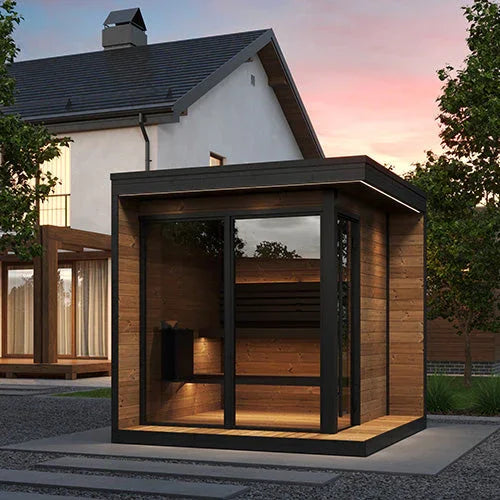
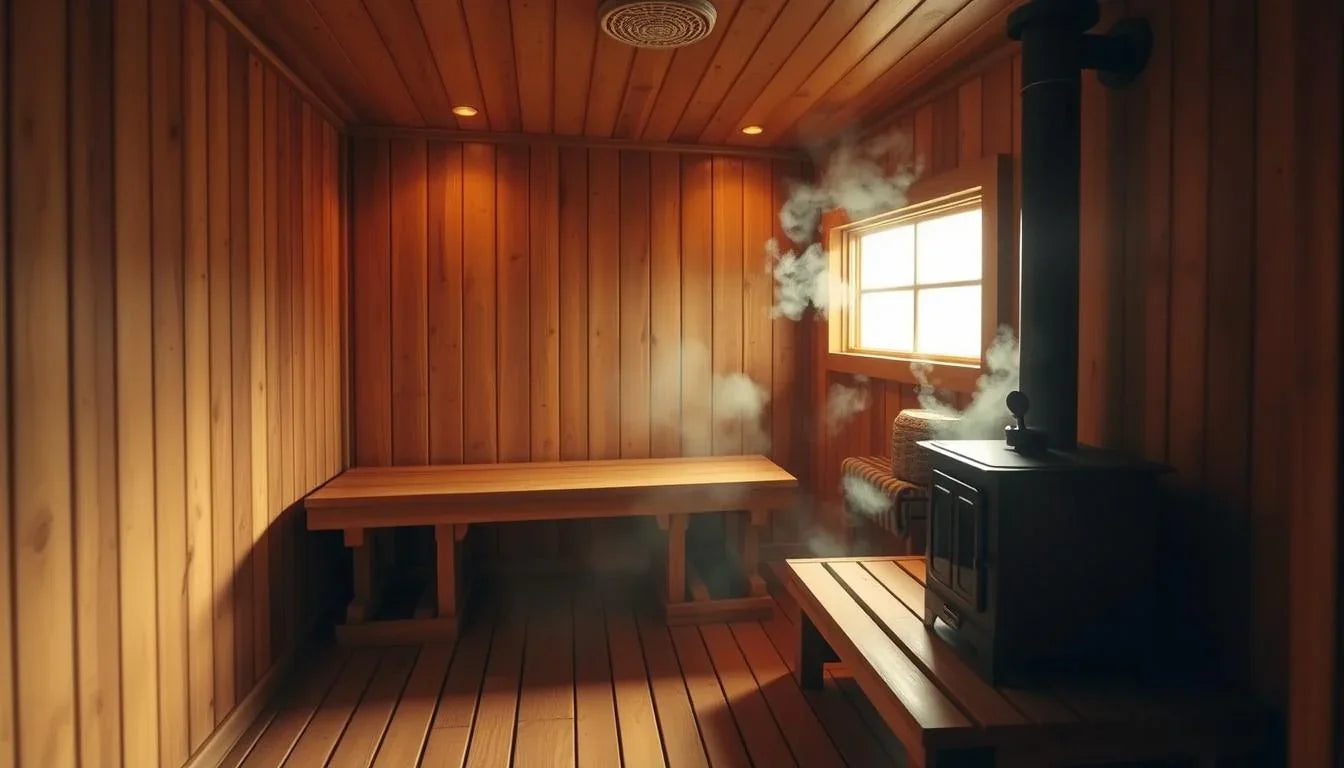

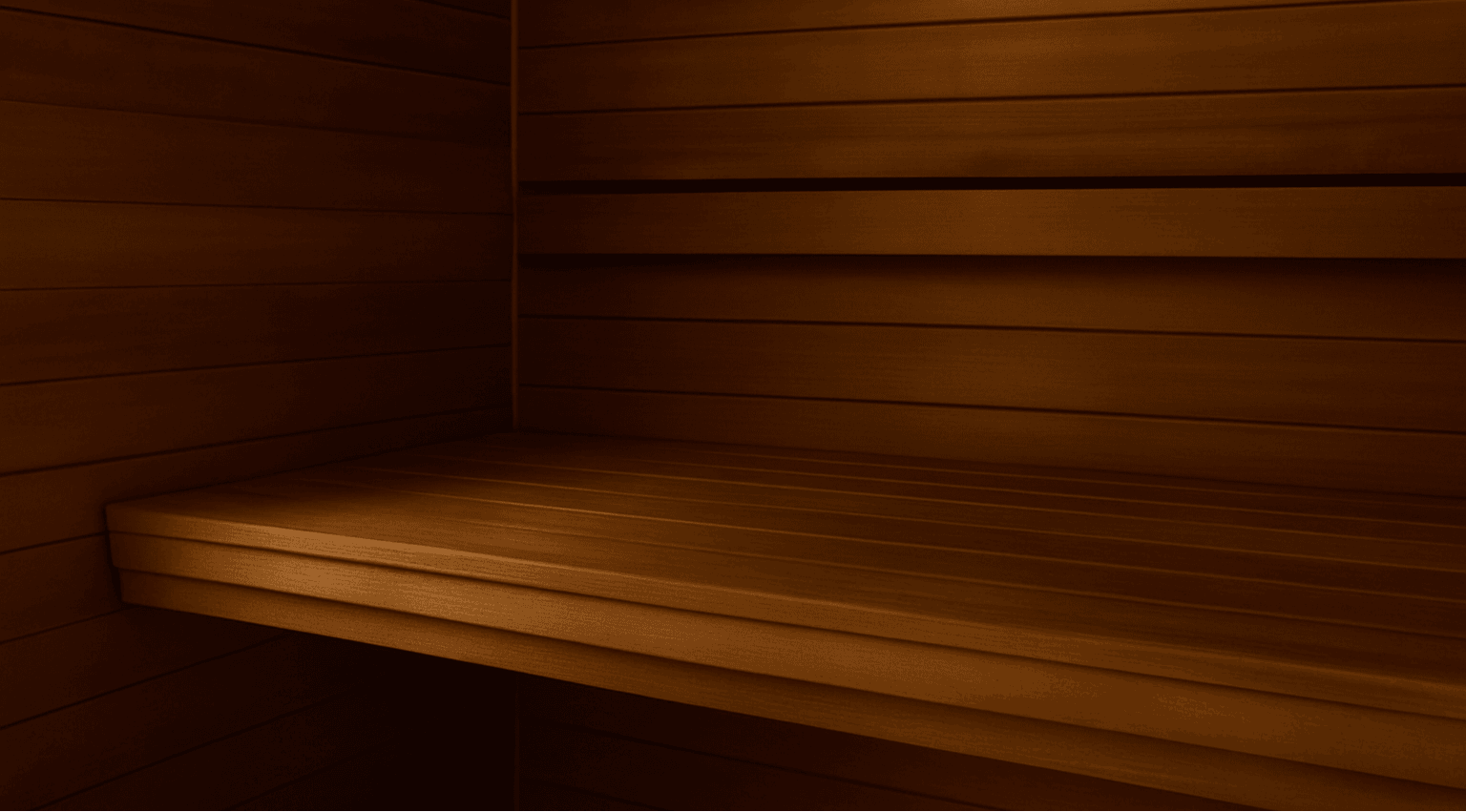
Leave a comment
This site is protected by hCaptcha and the hCaptcha Privacy Policy and Terms of Service apply.